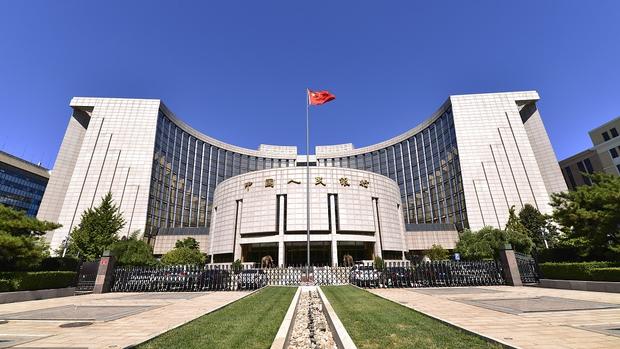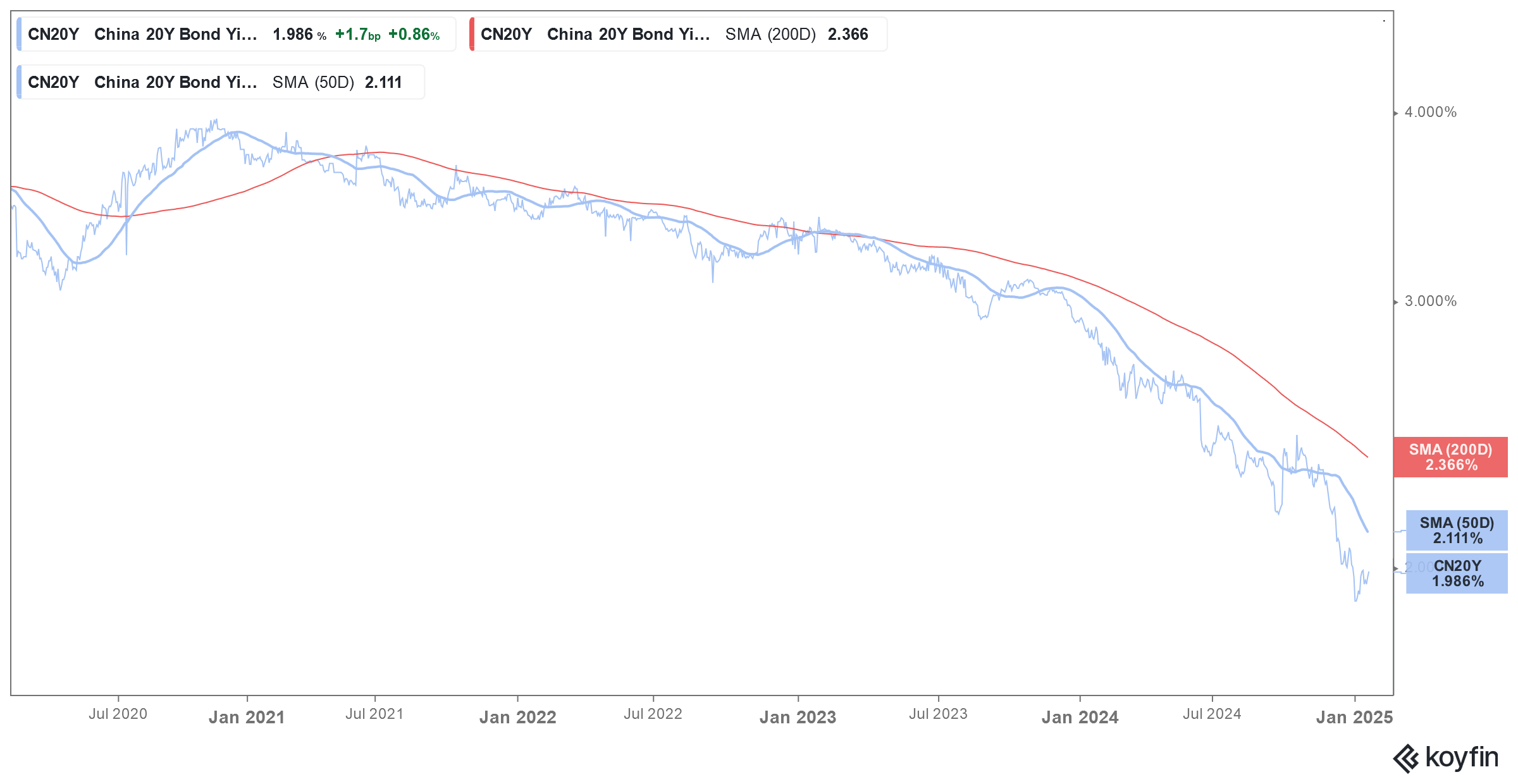
China has kept its benchmark interest rates unchanged before Donald Trump’s inauguration. The country is also battling a weakening currency and while the yuan depreciation is positive for its export sector it also limits the Chinese central bank’s ability to cut rates.
The PBOC (People’s Bank of China) kept the 1-year LPR (loan prime rate) at 3.1% while leaving the 5-year LPR unchanged at 3.6%. It last cut the rates in October but has kept them unchanged in subsequent meetings.
While the rest of the world is still battling high inflation, Chinese inflation is quite benign, and the country is instead worried about deflation. Benign inflation provides legroom for the Chinese central bank to ease its monetary policy, unlike in most other countries, where inflation remains a concern.
The country’s retail inflation is barely positive while wholesale prices have now fallen for 27 consecutive months. However, amid a slowing economy and deflation worries, investors have been piling into Chinese government bonds driving yields to record lows. Amid the plummeting yields, China’s central bank even halted its purchases of government bonds.
China keeps interest rates unchanged
Notably, the Chinese central bank embarked on an accommodative monetary policy in September and lowered its 7-day reverse repurchase rate by 20 basis points to 1.5%. It also lowered the reserve requirement ratio for banks by 50 basis points which would make more funds available for lending.
The People’s Bank of China said that the reserve ratio cut will “create a good monetary and financial environment for China’s stable economic growth and high-quality development.” Governor Pan Gongsheng said that the PBOC would cut the RRR by between 25 basis points to 50 basis points by the end of 2024.
However, despite the PBOC pivoting to what it called a “moderately loose” monetary policy, it hasn’t cut the reserve requirements after September.
Chinese GDP growth was better than expected in Q4
China’s Q4 GDP grew by 5.4% in the final quarter of 2024 which was higher than the 5% growth that economists were expecting. The country’s GDP grew by 5% last year which is in line with the “around 5%” growth that it was targeting.
Notably, while China’s GDP grew at an annualized pace of over 5% in Q1, the growth fell below that threshold in the next two quarters. Amid slowing growth, the country started unleashing a flurry of stimulus measures beginning in September.
China announced yet another stimulus after the parliament meeting concluded in November. The package, which is worth 10 trillion yuan (around $1.4 trillion) and is spread across five years, is meant to tackle the burning issue of local government debt and would allow them to borrow more to spur growth.
The world’s second-biggest economy also vowed more fiscal measures despite concerns over its already high debt pile with the finance minister stressing that China has more space to increase its fiscal deficit.
Yuan falls to multi-month lows
China’s yuan has fallen to multi-month lows and has shed over 3% since Trump’s election. Analysts believe the yuan could slump even further if Trump goes ahead with the 60% tariffs that he has talked about.
Notably, during Trump’s first tenure, the US Treasury Department designated China as an official currency manipulator. For long, the US and other countries have alleged that China’s currency is artificially low which makes its exports competitive in global markets.
China looks to maintain a “relatively stable yuan” and while there are fears of significant depreciation in the Chinese currency in light of Trump’s tariff threat, some believe these fears might be overblown.
For instance, Larry Hu, chief China economist at Macquarie believes that “although the tariff hike could be larger in trade war 2.0, the scope for the yuan depreciation may be much smaller this time.”
David Roche, a strategist at Quantum Strategy believes that while the yuan would depreciate, “Chinese authorities will try to make the yuan decline orderly.”
China is expected to announce more stimulus measures
Goldman Sachs meanwhile expects more stimulus from China in 2025 which it believes would help offset any negative impact from Trump’s tariffs. The firm expects China’s GDP to rise by 4.5% in 2025 based on its assumption of a 20-percentage point increase in US tariffs.
“The choice in front of Chinese policymakers is simple: either to provide a large dose of policy offset or to accept a notably lower headline real GDP growth,” said Goldman Sachs’ Chief China Economist Hui Shan. The note added, “We expect them to choose the former.”
According to Shan, “The Chinese economy faced significant growth headwinds in 2024, and policymakers finally started more forceful easing in late September.” She added, “How Chinese policymakers will lean against the wind to stabilize domestic consumption and the property market, and to manage renewed US-China trade tensions, will be the overarching theme of 2025.”
China is witnessing a structural slowdown
All said, there seems to be no easy remedy for the structural slowdown in the Chinese economy. China’s industrial sector has been plagued by a massive overcapacity and with many countries clamping down on imports from China, Chinese companies are struggling to export their overcapacity.
Notably, the bulk of Chinese households’ wealth is tied up in the real estate sector which is under massive stress. This is prompting Chinese consumers to hold back on their purchases.
National People’s Congress meeting is set to be held in March where the country will announce the growth targets for 2025. With China’s economy widely expected to slow down even further this year, the country might need to come up with more stimulus measures, especially with Trump set to become the 47th US president.


Question & Answers (0)